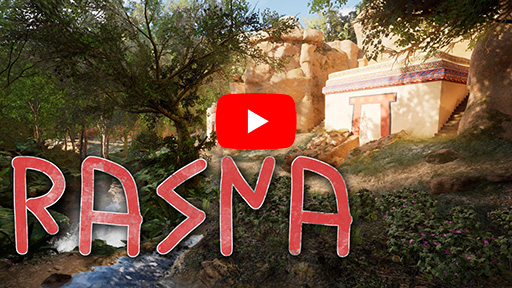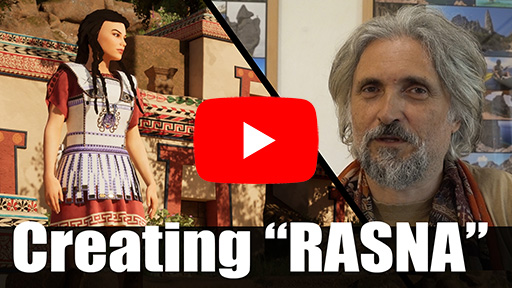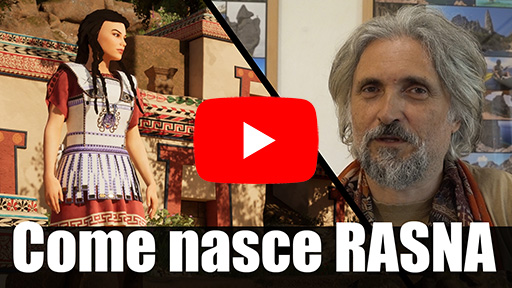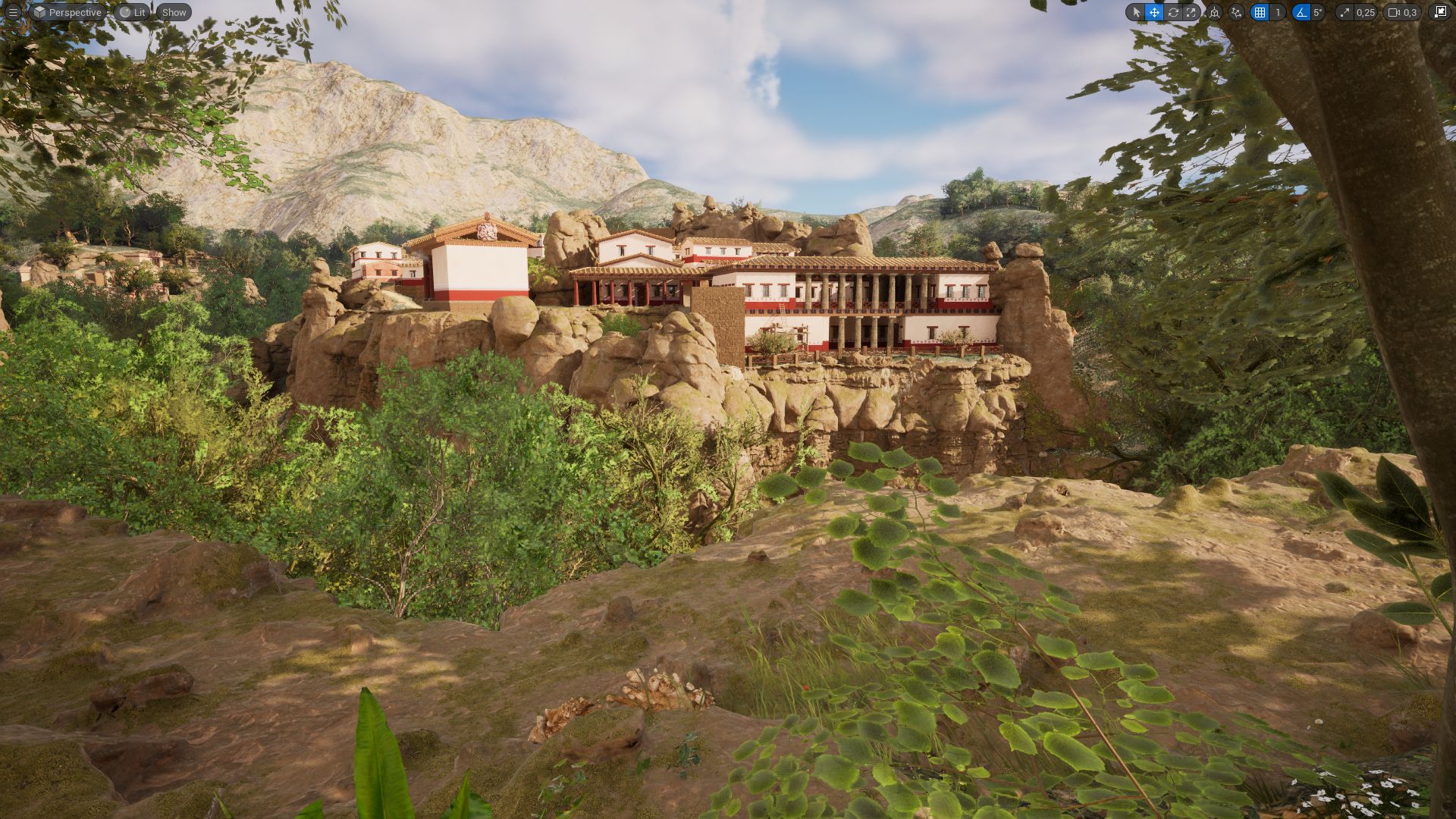
Rasna - an Etruscan Game
"Rasna" is an historically accurate Etruscan tale: a legend as it might have been told in ancient times when people gathered around the fire in the evening.
Game Overview
"Rasna" is an single player open world game, in the form of an "Historically Accurate Etruscan Tale" meaning that it meticulously embraces historical accuracy, while immersing the player in a world teeming with mysterious places, magical creatures, and mythology.
In essence, we haven't aimed to recreate a historical fact but rather a legend as it might have been told in ancient times when people gathered around the fire in the evening.
“Rasna” is how the Etruscan used to call themselves. Practically “Rasna” means “Etruscan” in Etruscan language.
See the state of game development.

Historical Period and Setting
Narratively, the story is currently set in the late spring of 499 B.C., within the heyday of Etruscan civilization. The setting is in a sunny, vibrant, and colorful May in Tuscia region...

Game Type and Game-play
The game is an "Open World, Single Player" experience. Game controls will be simple and intuitive, ensuring maximum playability and allowing players to immerse themselves in the story...

Terrain
The game's setting is an actual existing territory, 50 km north from Rome. Here the water has eroded some ancient volcanic hills, creating a sort of canyon-land. About 2500 years ago, the Etruscans built their cities in this area.

Architecture and Art
The city of Manthura and its main gate are located exactly in the original position, but only few traces of the ancient city remain. For my reconstruction I relied on material from different museums and other archeological sites of the same region.

Necropolis and "Vie Cave"
The Etruscans carved their necropolis (the city of the dead) into the solid rock of the canyon's walls. In the game the Manthura's Necropolis has been reconstructed with the utmost accuracy.

People and clothing
The goal is maximum accuracy. Thanks to sculptures and paintings, we even know what the typical hairstyles of the time were.
Characters will appear clean, and their clothing well-maintained.

Daily life and agriculture
In immersing the player in the game's historical context, agriculture and everyday life plays a crucial role. I made sure to faithfully recreate all the typical daily objects documented in various Etruscan museums.

Nature and Vegetation
I'm putting great care into reconstructing the hilly ecosystem of the area. Unlike most games with only a dozen tree models of one or two species, in this case, I've created over a hundred different tree models.

Traditions, Mythology, Costumes, Names
The creatures the player encounters come from the mythology of that era: fauns, nymphs, chimeras, household spirits, spirits of the deceased, etc.
The story is original, but we try to somehow remain consistent with the characteristics of all these creatures.
For religion, we refer to what little is known about Etruscan religion and the more archaic part of Roman tradition.
The game's protagonist is a young woman; we don't know if this would have been realistic, but among all the Mediterranean civilizations of the time, the Etruscans were by far the most gender-equal.
All the names of the various characters are real Etruscan personal names. The name chosen for the protagonist is Velia because it is the origin of the Latin name Julia, which is currently common worldwide.
Alphabet
Nowadays one of the most diffused alphabet (the one used in this document) is the Latin/Roman Alphabet. As the Romans derived their writing from the Etruscans, most of the Etruscan letters are easily recognizable to us. In the game we decided to use a font as close as possible to the original Etruscan Alphabet, see image below:
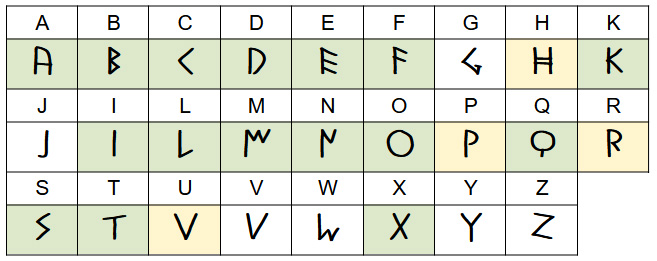
Green bg: original Etruscan alphabet, untouched
Yellow bg: the letters HPRU were slightly modified to became more easely readable
White bg: the letters GJVWYZ didn’t existed in the original Etruscan Alphabet and were created by us
Note: Etruscans used to write in the "bustrophedon" way: alternating every line from left to right and from right to left, starting the first line right to left.
To make texts more readable, all the writings in the game are left to right.

